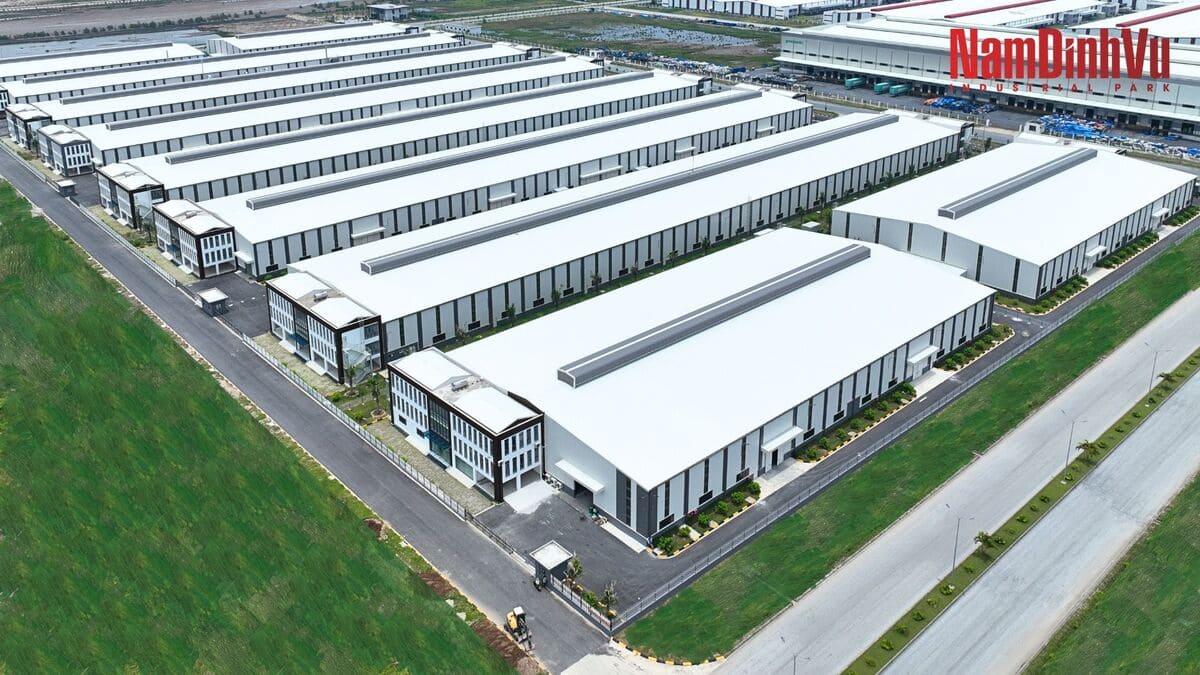Vietnam Industrial Estate
As global trade faces new challenges, Vietnam has emerged as a resilient industrial destination. The latest U.S. tariff policy, effective from August 1, 2025, has accelerated strategic shifts among manufacturers across Asia. In this changing environment, Vietnam stands out as a rising hub for global supply chain restructuring.
Shifting Trade Dynamics and Vietnam’s Competitive Advantage
The implementation of new U.S. tariffs has driven corporations to reconsider their production bases. Although initial drafts proposed tariffs as high as 46% on exports, subsequent negotiations reduced the rate to 20%. This adjustment, while still higher than before, was seen as manageable and helped restore investor confidence. From that point, Vietnam quickly regained its momentum, attracting renewed capital and attention across the region.
The diversification of manufacturing beyond China — the “China Plus One” strategy — has been developing for more than a decade. Factors such as rising wages, strict environmental policies, and trade frictions had already encouraged companies to seek alternative locations. The new U.S. tariff measures have now accelerated this trend, reinforcing Vietnam’s appeal as a cost-effective and strategically located production base.
Among Southeast Asian economies, Vietnam possesses a distinct edge: competitive labor and logistics costs, proximity to China, and strong connectivity through key shipping routes. More importantly, its stable political and regulatory environment provides reassurance for long-term investment. As noted by Trang Bui, CEO of Cushman & Wakefield Vietnam, companies are no longer moving only final assembly lines but are considering full supply chain relocations to Vietnam, driven by policy stability and favorable re-export taxation. This transition has boosted the demand for premium ready-built factory spaces across the country.
The Transformation of Vietnam’s Ready-Built Factory Sector
Once perceived as underdeveloped, Vietnam’s ready-built factory (RBF) sector has evolved into a core strength within its industrial landscape. Cushman & Wakefield reports that by the second quarter of 2025, total RBF supply had reached around 11 million square meters, with occupancy rates exceeding 85%. The key clusters include Ho Chi Minh City (3 million sqm), Dong Nai (2.2 million), Bac Ninh (1.6 million), and Hai Phong (2.2 million), creating dynamic industrial corridors that continue to attract foreign investment.
Modern RBFs now adhere to high-quality construction standards, using prefabricated steel structures, corrosion-resistant coatings, and insulated roofing. They feature ceiling heights of 4–13 meters and floor loading capacities of 1,000–4,000 kg/m². Compliance with national standards — TCVN 9207:2012 (electricity), TCVN 7114:2008 (lighting), and QCVN 06:2022/BXD (fire safety) — ensures functionality and safety. Lighting systems deliver 100–750 lux across production zones, while advanced ventilation combines mechanical and natural airflow to maintain optimal working conditions.

Future-ready design is another highlight. Roofs are solar-compatible, parking areas are EV-ready, and an Energy Management System (EMS) tracks energy use and emissions in real time. The growing adoption of “green factory” models — featuring low-carbon materials, solar energy, and water recycling — reflects Vietnam’s industrial modernization. Developers are also prioritizing worker well-being through improved air quality, natural lighting, green zones, and smoke-free areas.
Outlook: Vietnam’s Path Toward a High-Value Manufacturing Hub
When compared regionally, Vietnam’s position is increasingly competitive. China faces mounting production costs and trade barriers; Thailand and Malaysia encounter high rents; Indonesia struggles with infrastructure gaps; and Singapore, while advanced, remains prohibitively expensive. Vietnam, by contrast, balances affordability, accessibility, and policy stability — a combination few others can match.
Analysts often draw parallels between Vietnam today and China in the early 2000s: low costs, strong labor availability, and growing foreign direct investment. Over the next decade, Vietnam is expected to move further up the value chain — from consumer goods manufacturing to high-tech sectors such as semiconductors, precision components, and automation.
Despite challenges like skilled labor shortages and limited industrial land, reforms in vocational training, infrastructure development, and high-tech incentives are creating strong growth momentum. Moreover, the rise of green-certified factories positions Vietnam as an ideal partner for corporations focused on ESG compliance.
In conclusion, the latest U.S. tariffs have acted as a catalyst for global supply chain restructuring. With its cost efficiency, strategic location, and stable investment climate, Vietnam is steadily establishing itself as Asia’s next manufacturing powerhouse — led by its rapidly advancing industrial estates and ready-built factory network.
Source: CUSHMAN & WAKEFIELD
